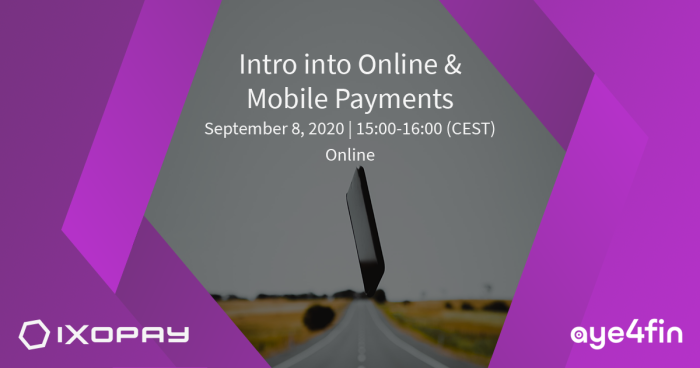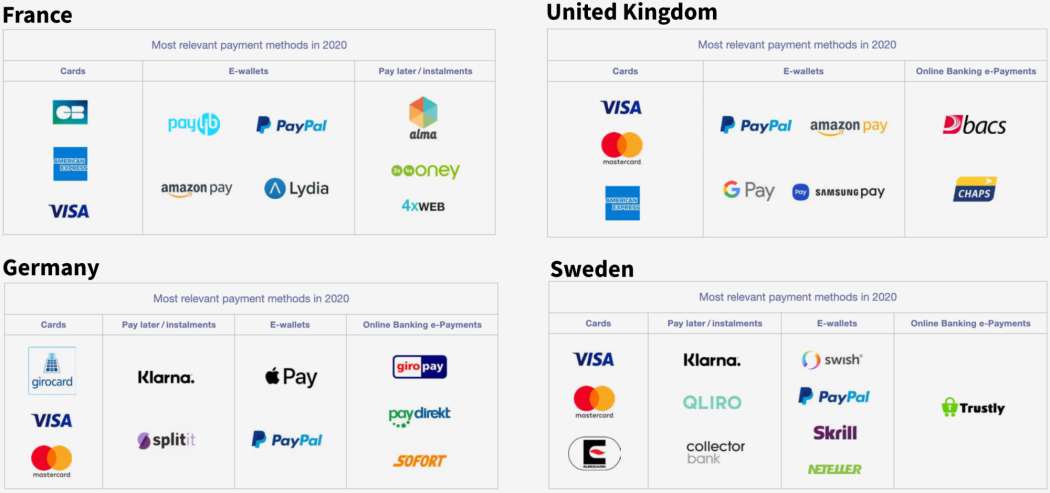Introduction to online and mobile payments
The payment for goods or services has been around since the dawn of time and is based on trust. Mobile and online payments, although not as simple in their set-up, also rely on trust. Historically, cards have been the most used method of online payment but as online purchasing grows, so does the variety of payment methods.
Recently, there has been a large amount of innovation causing existing market leaders to be challenged by new initiatives. For example, PayPal is threatened by local alternative payment methods (APMs); Visa/MasterCard are challenged by Apple Pay and Facebook; and banks are challenged by new market entrants.
Bitcoin was created for anonymous P2P payments, it is not linked to any fiat currency, therefore, the issuing and management of values is unregulated. The key mechanism of trust is still the base of all businesses today.
We are also seeing banks fighting back against crypto and digital currencies by creating their own that will replace existing means of payments, the difference here is that these currencies will be regulated. There are many initiatives on the way but China is currently the most advanced, see CBDC (Central Bank Digital Currency).
We are starting to see that whoever dominates the consumers’ daily life, will determine how payments are conducted. Apple Pay, Google Pay, WeChat, Facebook, and WhatsApp are currently dominating the daily life of billions of people making them the gatekeepers for acceptance of payment systems.
Similar businesses with different strategies, what happens when you take a closer look:
Wirecard and Adyen, they offer/ed a similar service but if we look at how each company has grown we start to see a gap. Wirecard focussed on M&A, used multiple-platforms, and took on clients with low to medium risk levels. Whereas Adyen grew organically, took fewer risks, and keeps its technology inhouse – so it has more control.
We know what happened to Wirecard but how can we make sure that we protect ourselves?
What we should expect to see in the future?
Mobile Payment
NFC
Invisible Payment
Contactless Commerce
Super Wallets
What does this mean?
Always have a backup! Although companies may advertise themselves as a “one-stop-shop” we have seen that even DAX companies (top 30 companies on the German Stock Exchange) can fail.
How can you future-proof your payments
The online and mobile payment landscape varies dramatically from country to country, below you can see the vast differences between the preferred methods of payment within EU countries, as reported by The Paypers.
So how can an eCommerce reach a global marketplace, if in each country they want to pay with a different payment method? The answer is by offering multiple payment options but that comes with its own set of challenges:
Technical Complexity
Disparate API & UX implementations
Proprietary reporting / data exchange formats
Commercial & Legal Complexity
Varying pricing models & regional coverage
“Aggregator” PSPs lead to increased fees, bias in terms of supported payment mix
Operational Complexity
Risk Management
Refunds & Chargebacks
Settlements & Reconciliation
To tackle these challenges merchants should look for a provider-agnostic technology layer. This layer provides abstracted payment services to the commerce platform/channels, “hiding” the specific complexities of each integrated payment provider/method. This product is called a payment orchestration or management platform and will allow you to:
Add new payment methods on the fly
Gracefully handle provider failures
Optimize back-office processes
Focus on your core business
Introduction into Online & Mobile Payments
About IXOPAY
IXOPAY is a payments orchestration platform enabling independent, flexible and global payment processing. As a highly scalable and PCI-DSS certified “fintech enabler”, IXOPAY fulfills the needs of large merchants as well as those of “white label” clients: payment service providers (PSPs), acquirers and independent sales organizations (ISOs). The modern, easily extendable architecture offers smart transaction routing & cascading, state-of-the-art risk & fraud management, fully automated reconciliation and settlements processing, comprehensive reporting as well as plugin-based integration of acquirers, payment service providers and alternative payment methods (APMs).
IXOPAY is part of the IXOLIT Group, founded in Vienna, Austria in 2001. With local entities in Austria and the USA, IXOLIT supports national and international customers across various industry verticals. The owner-led and -financed company has grown from 2 to more than 65 employees and is focused on building innovative solutions for eCommerce.
Please find more information about IXOPAY here: https://www.ixopay.com






